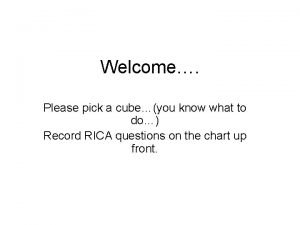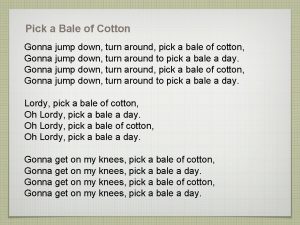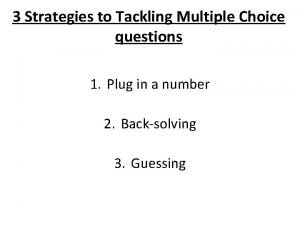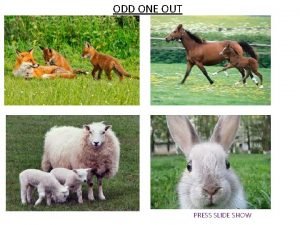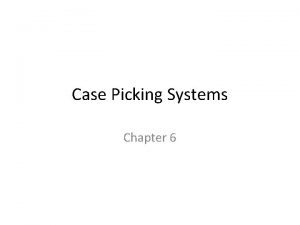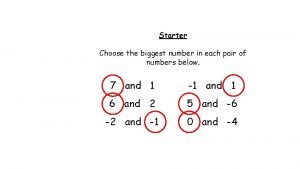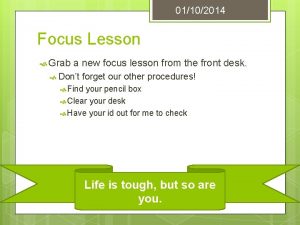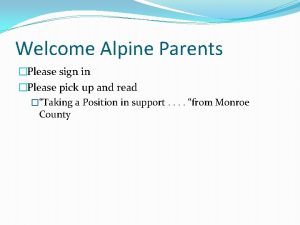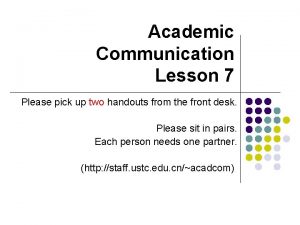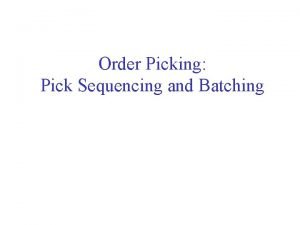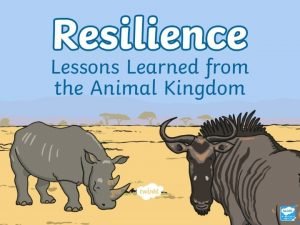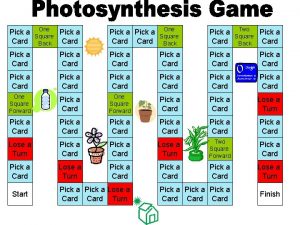Focus Lesson Please pick up a new focus





























- Slides: 29

Focus Lesson Please pick up a new focus lesson from the front! We are reviewing MITOSIS. (Cell Division) Did you have your supplies? - Highlighter - New notebook

What are we learning? • Last class: – Stations/ rotations – 1 st grade of Q 4! • This class: – Notes on ecological succession – Group practice – IP practice – Quiz

Changes in Ecosystems: Ecological Succession What do you need to know: SWBAT Describe changes in ecosystems resulting from seasonal variations, climate change, and succession.

Prediction drawing: page 2 What would happen if EWHS was abandoned? 1. What would the school look like after 1 year? After 10 years? After 20 years? After 100 years? 2. What types of plants and animals would you see at each stage? 3. After 100 years what would the football field look like? You should have 4 pictures!

Guided Notes: page 3 • Succession-Natural, gradual changes in the types of species that live in an area; can be primary or secondary • Succession can take place both in water and on land. • Succession is often difficult to observe because it often takes a really long time.

Primary Succession • Begins in a place without any soil – Sides of volcanoes – Glaciers • Starts with the arrival of living things such as lichens that do not need soil to survive • The first organisms to arrive are called PIONEER SPECIES.

Primary Succession • 5 Steps: 1) Soil starts to form when erosion and lichens break down the rocks. When lichen decompose, they add small amounts of organic matter to the rock to make soil.

http: //botit. botany. wisc. edu http: //www. saguaro-juniper. com/

Primary Succession 2)Simple plants like mosses and ferns can grow in the new soil http: //www. uncw. edu http: //uisstc. georgetow n. edu

Primary Succession 3) The simple plants die, adding more organic material • The soil layer thickens, and grasses, wildflowers, and other plants begin to take over http: //www. cwrl. utexas. edu

Primary Succession 4) These plants die, and they add more nutrients to the soil • Shrubs and trees can survive now. http: //www. rowan. edu

Primary Succession 5) Insects, small birds, and mammals have begun to move in • What was once bare rock now supports a variety of life http: //p 2 -raw. greenpeace. org

Secondary Succession • Begins in a place that already has soil. • Occurs faster and has different pioneer species than primary succession • Example: after forest fires, mudslides, floods

http: //www. geo. arizona. edu

http: //www. ux 1. eiu. edu

http: //www. agen. ufl. edu

Climax Community • A stable group of plants and animals that is the end result of the succession process • Does not always mean big trees – Grasses in prairies – Cacti in deserts

Check for Understanding A volcanic island called Braveland was newly created in the pacific ocean 50 years ago. Lichens began to grow on the volcanic rock. Around 10 years ago grasses began to grow in the soil that was created by the lichens. a) What type of succession is this? Why? b) In this example, what is the pioneer species? c) Predict what will happen on the island in the next 100 years. What will the island look like?

Check for Understanding As a forest ranger, you are analyzing a fire that swept through the Colorado Rockies last year burning almost everything to the ground. a) What type of succession is this? Why? b) Predict what will happen to the forest over the next 100 years.

Aquatic Succession • Over time aquatic ecosystems can change too. • Lakes and ponds will fill in and the plant and animal life will change.

Aquatic Succession

Aquatic Succession

Aquatic Succession

Independent Practice: page 5

1) Is this an example of primary or secondary succession? Please explain. Secondary because there is soil. 2) Write the letters of the ponds in order from the youngest, to the oldest. B, C, A, D 3) What did you use to help you order the ponds? You can tell because the soil gets deeper and the plants and animals become more complex.

4) Black bass and bluegill make their nests on sandy bottoms. In which pond would they live? B-The answer is in the paragraph. 5) Predict what will happen to the bass and blue gill as the floor of the ponds fills with organic debris? Their population will decrease.

6) Golden shiner and mud minnows lay their eggs on Chara. In which pond would they live? C-The answer is in the paragraph 7) Some amphibians and crayfish can withstand periods of dryness by burying themselves in mud. In which pond(s) would they survive? D-The answer is in the paragraph

Page 4 Create a storyboard of the 5 stages of Primary Succession.

Exit Slip 10 Min to Finish Exit Slip This should be done independently and without notes.
 Please pick one
Please pick one Please pick one
Please pick one Please pick one
Please pick one Please pick one
Please pick one Pictionary quiz
Pictionary quiz Raymond carver will you please be quiet please
Raymond carver will you please be quiet please For adult
For adult Porters generic strategy
Porters generic strategy Drivers of differentiation
Drivers of differentiation Actor focus vs object focus
Actor focus vs object focus Put attention please
Put attention please This lesson will focus
This lesson will focus Unit 7 language focus
Unit 7 language focus Heather dane
Heather dane Action tag and dialogue tag
Action tag and dialogue tag Jump down turn around pick a bale of cotton
Jump down turn around pick a bale of cotton Lipid
Lipid Pick 3 questions
Pick 3 questions Etsu registrar
Etsu registrar Verb and preposition examples
Verb and preposition examples Radiographic artifacts
Radiographic artifacts Pick a number questions
Pick a number questions Romeo and juliet chorus act 1
Romeo and juliet chorus act 1 El teorema de pick
El teorema de pick Find odd one out
Find odd one out Layer picking system
Layer picking system Eecs 489 umich
Eecs 489 umich An easier way to choose contrasting structures is to pick
An easier way to choose contrasting structures is to pick Solving linear inequalities hangman
Solving linear inequalities hangman Root tip pick elevator uses
Root tip pick elevator uses

